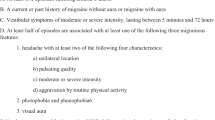Opinion statement
Patients with acquired forms of nystagmus may suffer from oscillopsia and blurred vision; abolishing or reducing nystagmus ameliorates these symptoms. Ideally, treatment of nystagmus should be directed against the pathophysiologic mechanism responsible. Identification of nystagmus pattern is important in directing therapy and occasionally requires electronic eye movement recording for precise characterization. Patients with acquired pendular nystagmus, particularly those with multiple sclerosis, often benefit from gabapentin, a drug with few side effects. Scopolamine, clonazepam, and valproate are also useful in some patients. A new drug, memantine, was effective in treating pendular nystagmus in one study, but it has not yet been approved for use in the United States. Periodic alternating nystagmus usually responds to baclofen. Central vestibular nystagmus, including downbeating and upbeating forms, can be treated with baclofen or clonazepam. In some patients, treatment of an underlying condition, such as periodic ataxia, Whipple’s disease, and Chiari malformation, abolishes nystagmus and improves vision. If pharmacologic therapy fails, optical devices can be considered in selected patients. Injections of botulinum toxin and surgery to weaken extraocular muscles are prone to induce diplopia and may precipitate plastic-adaptive ocular motor changes that eventually negate the beneficial effect.
Similar content being viewed by others
References and Recommended Reading
Leigh RJ, Averbuch-Heller L: Nystagmus and related disorders. In Walsh and Hoyt’s Clinical Neuro-ophthalmology, vol 1, edn 5. Edited by Miller NR, Newman NJ. Baltimore: Williams & Wilkins; 1997:1461–1505. A comprehensive and updated review of the pathophysiology, phenomenology, and therapy of various types of nystagmus and saccadic intrusions.
Averbuch-Heller L, Tusa RJ, Fuhry L, et al.: A double-blind controlled study of gabapentin and baclofen as treatment for acquired nystagmus. Ann Neurol 1997, 41:818–825. A multicenter, double-blind crossover trial that compared gabapentin with baclofen in patients with acquired pendular and jerk nystagmus. Using precise measurement of eye movements, this study showed that gabapentin was effective in ameliorating nystagmus, whereas baclofen was not. Gabapentin reduced oscillopsia and improved vision in 10 of 15 patients with pendular nystagmus.
Halmagyi GM, Rudge P, Gresty MA, et al.: Treatment of periodic alternating nystagmus. Ann Neurol 1980, 8:609–611.
Dieterich M, Straube A, Brandt T, et al.: The effects of baclofen and cholinergic drugs on upbeat and downbeat nystagmus. J Neurol Neurosurg Psychiatry 1991, 54:627–632.
Currie JN, Matsuo V: The use of clonazepam in the treatment of nystagmus-induced oscillopsia. Ophthalmology 1986, 93:924–932.
Barton JJS, Huanan AG, Sharpe JA: Muscarinic antagonists in the treatment of acquired pendular and downbeat nystagmus: a double-blind, randomized trial of three intravenous drugs. Ann Neurol 1994, 35:319–325.
Leigh RJ, Burnstine TH, Ruff RL, Kasmer RJ: The effect of anticholinergic agents upon acquired nystagmus. A double-blind study of trihexyphenidyl and tridihexethy chloride. Neurolog 1991, 41:1737–1741.
Averbuch-Heller L, Leigh RJ: Nystagmus. Curr Opin Ophthalmol 1996, 7(6):42.
Lefkowitz D, Harpold G: Treatment of ocular myoclonus with valproic acid. Ann Neurol 1985, 17:103–104.
Lepore FE: Ethanol-induced resolution of pathologic nystagmus. Neurology 1987, 37:887.
Hart PE, Schon F, Pambakian AL, et al.: Suppression of pendular nystagmus by alcohol in a patient with multiple sclerosis. J Neurol Neurosurg Psychiatry 1998, 65:424.
Baloh RW, Winder A: Acetazolamide-responsive vestibulocerebellar syndrome: clinical and oculographic features. Neurology 1991, 41:429–433.
Gordon N: Episodic ataxia and channelopathies. Brain Dev 1998, 20:9–13. A review of clinical and physiologic aspects of different types of episodic ataxia, with an emphasis on their treatment and the differential diagnosis of conditions with periodic symptoms.
Singer R: Diagnosis and treatment of Whipple’s disease. Drugs 1998, 55(5):699–704.
Dell’Osso LF: Improving visual acuity in congenital nystagmus. In Neuro-ophthalmology, vol 7. Edited by Smith JL, Glaser JS. St. Louis: C.V. Mosby 1973:98-106.
Leigh RJ, Rushton DN, Thurston SE, et al.: Effects of retinal image stabilization on acquired nystagmus due to neurological disease. Neurolog 1988, 38:122–127.
Tomsak RL, Remler BF, Averbuch-Heller L, et al.: Unsatisfactory treatment of acquired nystagmus with retrobulbar botulinum toxin. Am J Ophthalmol 1995, 119:489–496.
Repka MX, Savino PJ, Reinecke RD: Treatment of acquired nystagmus with botulinum neurotoxin A. Arch Ophthalmol 1994, 112:1320–1324.
Lennerstrand G, Nordbo OA, Tian S, et al.: Treatment of strabismus and nystagmus with botulinum toxin type A. An evaluation of effects and complications. Acta Ophthalmol Scand 1998, 76:27–37.
Buckley SA, Elston JS: Surgical treatment of supranuclear and internuclear ocular motility disorders. Eye 1997, 11:337–380.
Furuya K, Sano K, Segawa H, et al.: Symptomatic tonsillar ectopia. J Neurol Neurosurg Psychiatry 1998, 64:221–226. This controlled study of symptomatic versus asymptomatic patients with tonsillar ectopia showed that even mild descent of cerebellar tonsils may cause neurologic symptoms, including downbeat nystagmus. In three of five patients, nystagmus disappeared following posterior fossa decompression.
Starck M, Albrecht H, Pollman W, Dieterich M: Drug therapy for acquired pendular nystagmus. J Neurol 1997, 244:9–16. In an open trial, memantine (a glutamate antagonist) was given to 11 patients with multiple sclerosis and pendular nystagmus, with complete cessation of nystagmus in all.
Author information
Authors and Affiliations
Rights and permissions
About this article
Cite this article
Averbuch-Heller, L. Acquired nystagmus. Curr Treat Options Neurol 1, 68–73 (1999). https://doi.org/10.1007/s11940-999-0034-4
Issue Date:
DOI: https://doi.org/10.1007/s11940-999-0034-4




